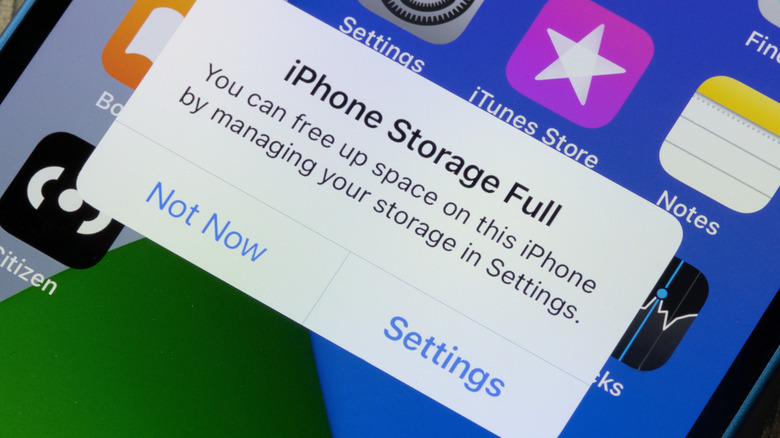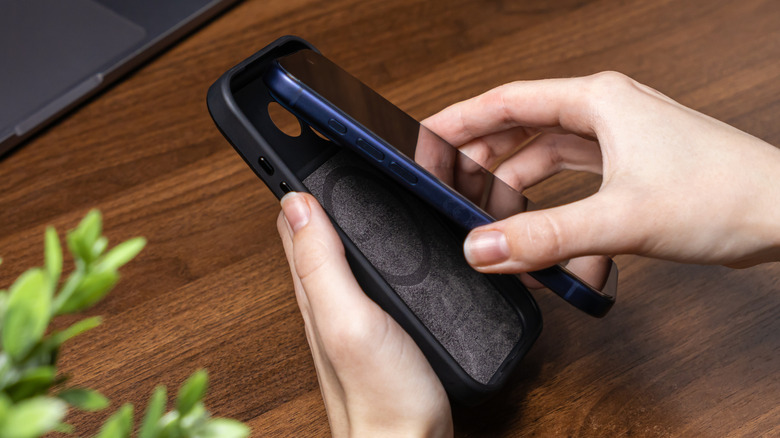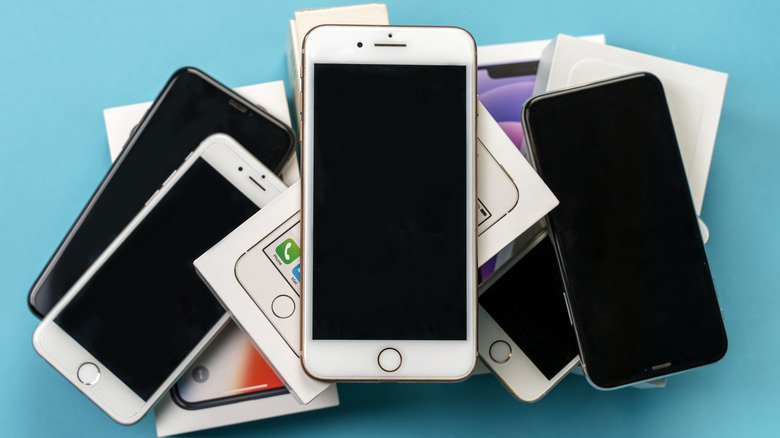4 Mistakes Everyone Makes When Buying An iPhone
There's a lot of fun to be had when it's time to get a new iPhone — enjoying the latest hardware developments from one of the top tech companies in the world, taking advantage of the powerful cameras and processor, or exploring the new features you can learn in iOS 26; the list simply goes on. Unboxing a new iPhone can be a good time for sure, but that experience sours quickly if you make one of these mistakes that seemingly everyone does.
Some of the most common pitfalls to avoid when buying an iPhone include choosing the wrong model, going with the wrong storage option, not protecting your new investment properly, and getting the wrong used device. Not all of these are going to completely ruin your purchase, but some mistakes can end up costing you some serious money, especially if you buy used.
Know that there are a couple of things to do after getting a new iPhone, even with the iPhone 17, to really get the biggest bang for your buck. Whether you're switching over from Android, buying your first smartphone, or are simply in the market to upgrade your current device, here are some things to keep in mind so that you don't repeat someone else's mistake.
Buying the wrong iPhone model or variation
One of the easiest mistakes to make when buying an iPhone is getting the wrong model, and this is especially true for first-time buyers. Most of the time, you're going to know what the model is by the number at the end of the iPhone's name. To conflate matters, Apple releases multiple variations within a lineup, each having its own benefits.
Take the iPhone 17, the most current iteration of the iPhone at the time of this writing, as an example. Considering Apple is still selling the iPhone 16 series, this alone can make things somewhat confusing. On top of that, the iPhone 17 lineup has four different devices, and what you should get is largely based on your needs and wants. The current iPhone 17 lineup includes the iPhone 17, iPhone Air, iPhone 17 Pro, and iPhone 17 Pro Max, so choosing the right one can be tricky if you don't know what you're looking for. However, going with the standard baseline model ensures you're getting a solid iPhone experience.
With the price of a new iPhone 17, knowing your options before you buy can be crucial to not wasting your money. Before even entering the store or shopping online, take a look at the specs of each device you're considering and weigh them against other alternatives. If you like a lot of camera options, for example, you'll likely want the iPhone Pro or Pro Max over the iPhone Air, which only has a single 48MP camera.
Getting an iPhone with insufficient storage
As if buying the wrong device wasn't trouble enough, there's also the storage options you need to think about. Along with a typical iPhone release having various models to choose from, the same also holds for storage options. Going with the iPhone 17 series again as the example, the baseline iPhone has 256 GB or 512 GB options. The iPhone Air and iPhone 17 Pro also have both storage options and an extra 1 TB version. The iPhone 17 Pro Max has all three versions and also a big 2 TB storage option.
A larger storage is going to cost you, so determine your needs before buying. For most users, taking photos or videos and downloading and installing apps are going to take up the most storage space. While there are things you can do if you're running out of iPhone storage, having the right amount in the first place can be a great way to avoid scrambling for space.
Something else to consider when it comes to iPhone storage is iCloud. If you're unfamiliar, iCloud is a way to store media, backups, and other information from your iPhone to Apple's cloud storage. Great as it is, you're only going to get 5 GB of storage for free, with options for 50 GB, 200 GB, and higher being available at rates that depend on your region. While you may be able to bundle iCloud alongside an Apple One subscription that may be worth it, it's nonetheless another thing to consider before making a purchase.
Not protecting the device with a case
Another big mistake folks can make when buying a new iPhone is overestimating (or even underestimating) just how strong the device itself can actually be. Considering these Apple devices aren't exactly cheap, determining the right amount of protection you need can be the difference between a nice, new phone and an unsightly cracked screen. While the iPhone 16 Pro experienced some lackluster results during a drop test, the iPhone 17 Pro Max performed incredibly well, with even the glass surviving being thrown in the air.
The thing about protecting an iPhone is that you really need to know your needs. There's a variety of solid iPhone 17 cases for under $30, but they may be too much (or not enough) protection for your device. Before buying a case, think about the type of work you do and your daily activities. If you're an active person who works a high-impact job, a strong, thick case like an Otterbox may be for you. On the flipside, if you work an office job or keep your devices close to your chest, a slim case or even no case at all may be your best bet. Naturally, you'll want to think about a screen protector, as well.
There's not really a wrong answer, but you'll definitely need to factor in your lifestyle when choosing a case. However, if you're the type that likes to be naked and free, an AppleCare+ or AppleCare One subscription may be the right move. Either can offer the support you need in case of an accident, and there's a handy website for picking the right coverage.
Buying an used iPhone from bad resellers
Going the used route when buying an iPhone can be easier on the wallet, but you risk it being more of a headache than buying a new iPhone outright. Don't think of this as some sort of scare tactic for buying a new iPhone — it's more a matter of carefully choosing where you get a used device. A good place to start when looking for a used iPhone is Apple's own Refurbished iPhone Store, which ensures you get a quality rebuilt product that's been certified by Apple.
Aside from retailers that you trust and are familiar with, a big thing to check when shopping online is whether the device is actually coming from a retail store, an individual, or a respected reseller. Just like buying a renewed MacBook on Amazon, buying a used iPhone from the site can come with risks, as third-party sellers can be responsible for testing and inspecting products, so try to get as much information as you can before clicking Add to Cart or Buy it Now.
In an ideal scenario, you're able to physically hold and inspect the device before buying it. While you should absolutely avoid buying an iPhone from places like FaceBook, Craigslist, or even eBay, there are some things you can do to help yourself against potential scams. Try to research the individual selling the device, if possible. It also helps to get the device's IMEI code when you can, as that's a great way to check if an iPhone has been stolen.




